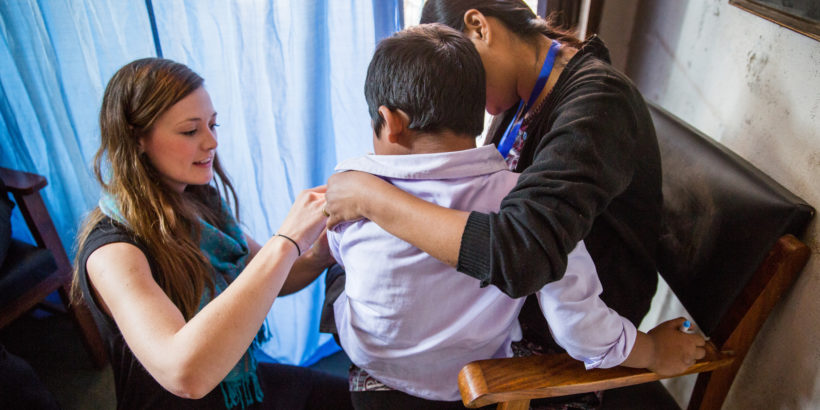In 2019, researchers from Yale School of Public Health and University of Antwerp led a study on the cost-effectiveness of typhoid vaccination strategies in Gavi-eligible countries. This study, published in the Lancet Infectious Diseases and shared in a previous blog post, described an analysis designed to inform typhoid conjugate vaccine (TCV) cost-effectiveness, an important aspect of the decision-making process for funding and scale-up of the pre-qualified TCV.
In a new section of this website, we expanded this analysis to include all 73 original Gavi countries and we created a set of tools to further explore the results. The tools are designed for both the global scale and individual country level so that decision-makers and stakeholders weighing new vaccine introduction are equipped with additional information.
Please keep reading for an introduction to the tool and to learn about key details that will be important as you explore the site.
A global perspective: World overview
The World Overview section contains global-level results on the predicted impact and cost-effectiveness of TCV. A few things to know:
- Results on predicted impact of TCV are displayed via an interactive map of the world, highlighting the 54 countries currently eligible for Gavi assistance.
- You can select a vaccination strategy (routine, routine plus campaign up to five years of age, routine plus campaign up to 15 years of age) and scroll over individual countries to see the predicted reduction in typhoid cases over 10 years following introduction.
- Results on TCV cost-effectiveness are presented as the minimum “willingness-to-pay” threshold at which any vaccination strategy is preferred compared to no vaccination. The willingness-to-pay threshold represents the monetary value assigned to one year of life lived without illness or disability, which varies country to country.
By visualizing the data this way, you can look across countries and do a multi-country comparison of the impacts of vaccination. For decision-makers at the global or regional level, this may be especially useful to easily see the potential impact in several countries.
Focusing in: Country-specific pages
For many decision-makers and advocates, the most useful cost-effectiveness information is about their specific country. In order to help provide the most detailed data possible for the local level, you can select a specific country and explore the major factors that influence the cost-effectiveness of typhoid vaccination. Once you select a country, you can navigate to four different sections, deciding what data you wish to explore: Key Results, Key Input Parameters, Key Drivers of Uncertainty, and Total Costs and Impact. A few key points to remember:
- The Key Results section features interactive figures that depict the cost-effectiveness of the different TCV strategies across a range of willingness-to-pay thresholds. The slider at the top will adjust the willingness-to-pay threshold and the text tells you the optimal strategy for that threshold. This information is plotted in a cost-effectiveness acceptability frontier. You can choose to show the results assuming the country receives support from Gavi (at current eligibility levels) or assuming the country pays the full costs for the vaccine.
- By clicking on the “Parameters” box below the graph, you can adjust the range of the input values that we include for the cost-effectiveness analysis (detailed in the Key Input Parameters section) and see how this affects the results. For example, drug-resistant typhoid may require more expensive treatment and lead to worse outcomes than drug-sensitive disease, and therefore the prevalence of drug resistance could impact TCV cost-effectiveness. For our default analysis, in absence of country-specific data, we assumed the prevalence of drug resistance was between 0% and 100%. If you want to change the prevalence to be 50% – 100%, increase the left-hand slider to 50% and see how the cost-effectiveness results change. This can be very useful for exploring how other interventions or events that affect the values of the input parameters might change the cost-effectiveness of TCV introduction.
As you use the tool and become familiar with the data, it’s important to remember that changing the parameters can result in scenarios that are less likely to be valid, and therefore results must be interpreted with caution. We recognize that many decision-makers have local knowledge and information that impacts the true cost-effectiveness of a vaccine introduction strategy. Our aim is to provide a tool where this local insight can be utilized and applied to strategic decisions. However, this is never meant to be the sole piece of information to drive a decision; it is one piece of the puzzle, one data point in a larger conversation about whether TCV introduction is a strategic decision. We hope that this tool allows users to explore the cost-effectiveness analyses presented in the Lancet Infectious Diseases study in an interactive way, and to explore how the results may change based on local insights.
Photo courtesy of ©Gates Archive/Samantha Reinders



